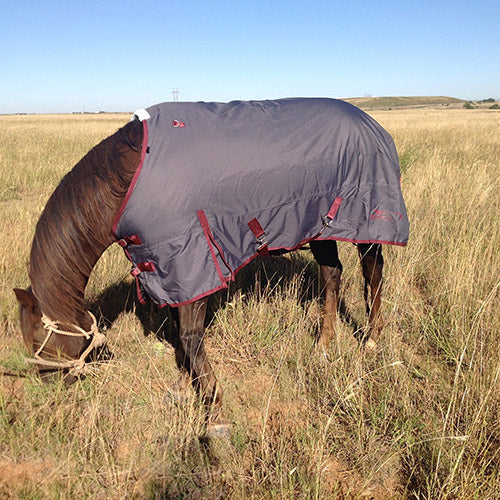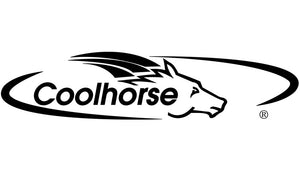What kind of winter blanket does my horse need?

stacey |
Winter blankets can be quite confusing. There are terms and numbers used to describe them that you may not hear anywhere else. We'll break it down and make it simple.
Coolhorse carries two main types of winter blankets. Turnout blankets and stable blankets. A turnout blanket is designed so that you will be able to use it on a horse that spends time outdoors. Better turnout blankets will have extra features such as gussets at the shoulders and elastic leg straps to allow for movement without rubbing. They are often water resistant and many have tail gates to keep the blanket centered if your horse rolls or plays hard.
Stable blankets are designed for horses that are kept stalled. These blankets are made to keep a horse warm, but typically are without many of the features that accommodate outdoor use. They are just not designed to accommodate running and playing horses, or horses exposed to the adverse weather conditions.
Once you know what type of blanket you are looking for, the details begin. One of the first things you will hear about is the denier fabric used. Denier is simply the unit used to measure how heavy that material is. According to Wikipedia "Denier is a unit of measure for the linear mass density of fibers. It is defined as the mass in grams per 9,000 meters. The denier is based on a natural standard: a single strand of silk is one denier. A 9,000 meter strand of silk weighs one gram." So following this rule, a 600 denier outer shell blanket has fabric on the outside layer that is 600 times more dense than silk.
Rip Stop is another common term. Rip stop fabric is simply resistant to rips and tears. A snag in rip stop material will not run (ladies, think runners in your hose!) and spread the length of the fabric.
Open front vs Closed front - Open front blankets allow you to adjust your blanket for fine tuning your fit. It can also help you be able to put them on and take them off of skittish horses or those unused to blanketing. In some situations it is a great benefit to be able to apply/remove open front blankets on horses that are tied up without having to untie them (like at a show). On the other hand, closed front blankets don't have any hardware that can potentially break, and don't leave an open gap that can let cool air in.
Waterproof and Water Resistant blankets are designed to keep your horse dry. Waterproof materials don't let any water in or out. This can actually be a bad thing on your horse. You never want your horse to sweat under his blanket, but if he gets frisky he can work up a sweat on even the coldest days. A water resistant blanket typically does a better job of letting that sweat dissipate, but still keeping rain and snow from soaking through and chilling him. Both of these types of materials are typically very wind resistant as well.
